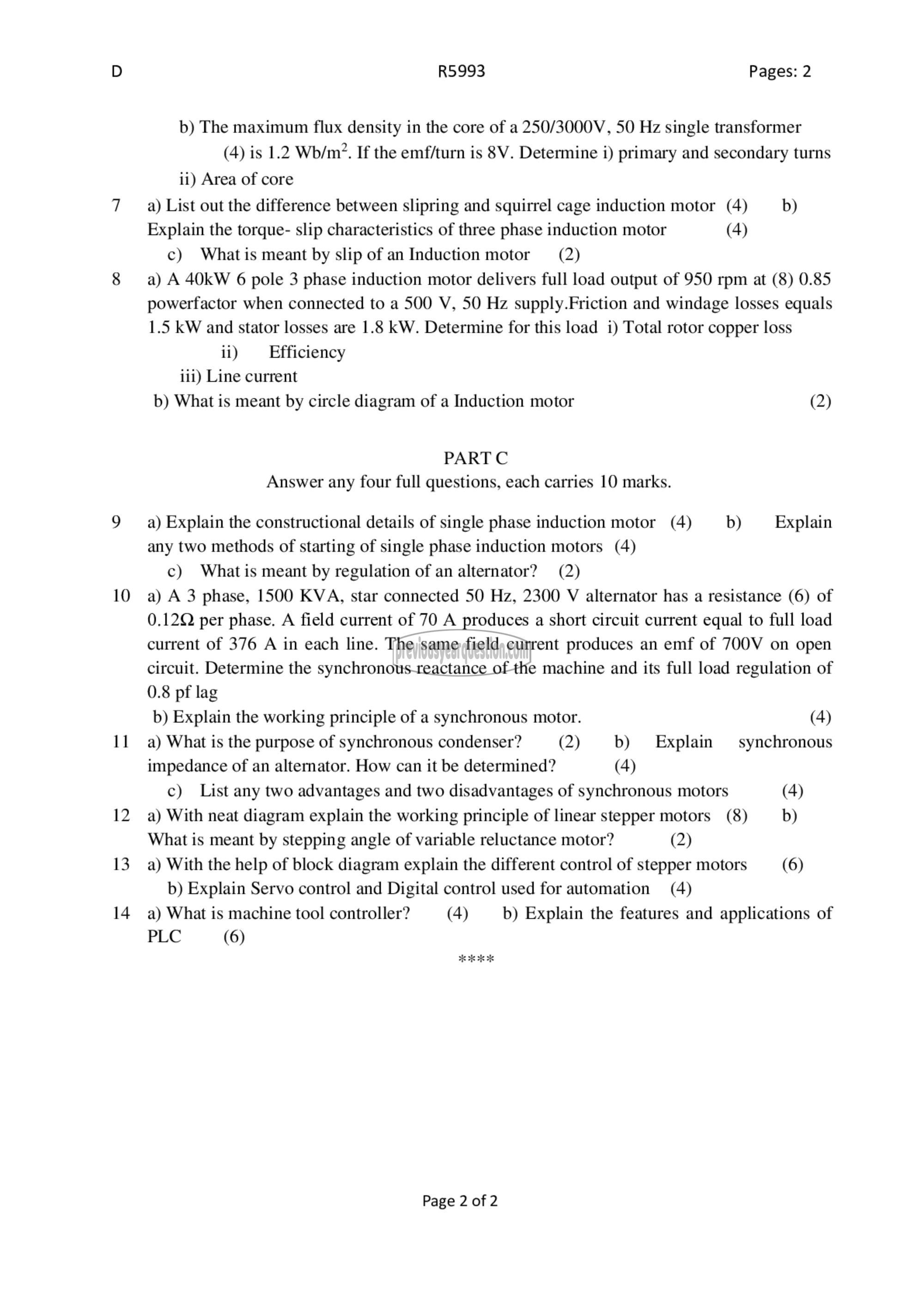APJ ABDUL KALAM TECHNOLOGICAL UNIVERSITY Previous Years Question Paper & Answer
Semester : SEMESTER 5
Subject : Manufacturing Processes
Year : 2018
Term : DECEMBER
Branch : AUTOMOBILE ENGINEERING
Scheme : 2015 Full Time
Course Code : ME 311
Page:2
10
11
12
13
14
R5993 Pages: 2
b) The maximum flux density in the core of a 250/3000V, 50 Hz single transformer
(4) is 1.2 Wb/m?. If the emf/turn 15 8V. Determine i) primary and secondary turns
ii) Area of core
a) List out the difference between slipring and squirrel cage induction motor (4) b)
Explain the torque- slip characteristics of three phase induction motor (4)
c) What is meant by slip of an Induction motor (2)
a) A 40kW 6 pole 3 phase induction motor delivers full load output of 950 rpm at (8) 0.85
powerfactor when connected to a 500 V, 50 Hz supply.Friction and windage losses equals
1.5 kW and stator losses are 1.8 kW. Determine for this load i) Total rotor copper loss
ii) Efficiency
iii) Line current
b) What is meant by circle diagram of a Induction motor (2)
PART ^
Answer any four full questions, each carries 10 marks.
a) Explain the constructional details of single phase induction motor (4) b) Explain
any two methods of starting of single phase induction motors (4)
c) What is meant by regulation of an alternator? (2)
a) A 3 phase, 1500 KVA, star connected 50 Hz, 2300 V alternator has a resistance (6) of
0.12Q per phase. A field current of 70 A produces a short circuit current equal to full load
current of 376 A in each line. The same field current produces an emf of 700V on open
circuit. Determine the synchronous reactance of the machine and its full load regulation of
0.8 pf lag
b) Explain the working principle of a synchronous motor. (4)
a) What is the purpose of synchronous condenser? (2) b) Explain — synchronous
impedance of an alternator. How can it be determined? (4)
c) List any two advantages and two disadvantages of synchronous motors (4)
a) With neat diagram explain the working principle of linear stepper motors (8) b)
What is meant by stepping angle of variable reluctance motor? (2)
a) With the help of block diagram explain the different control of stepper motors (6)
b) Explain Servo control and Digital control used for automation (4)
a) What is machine tool controller? (4) b) Explain the features and applications of
PLC (6)
Page 2 of 2
